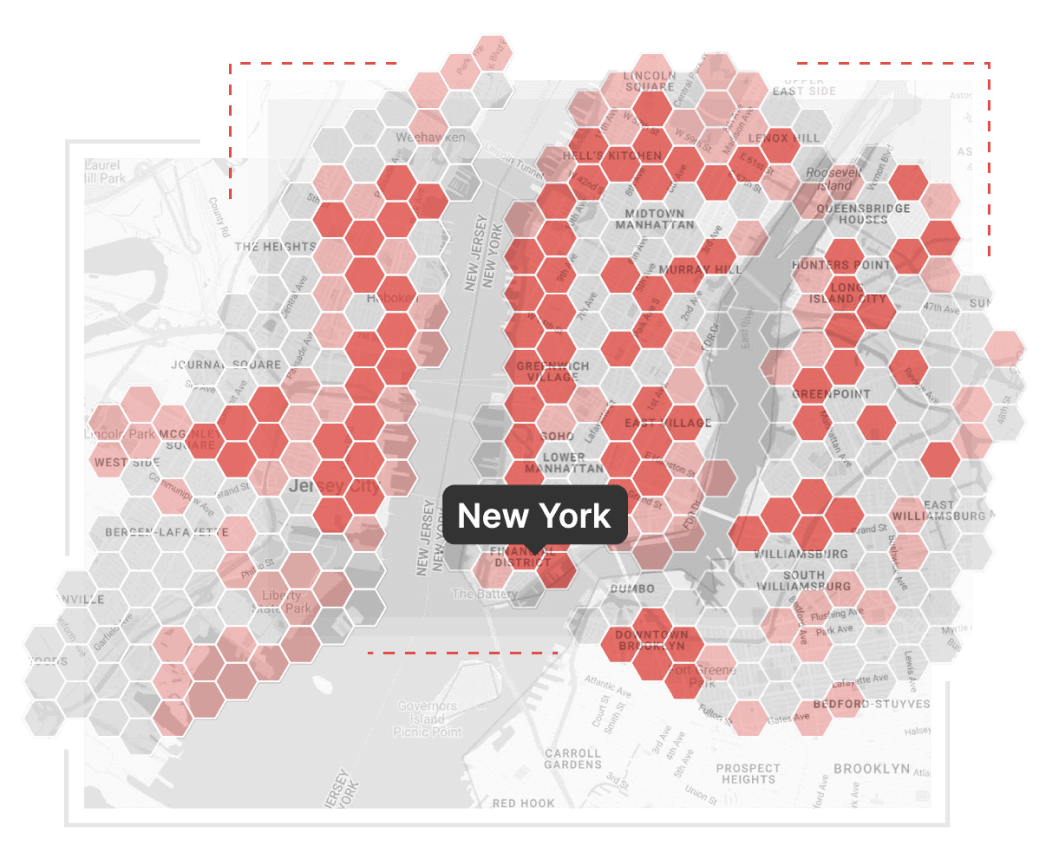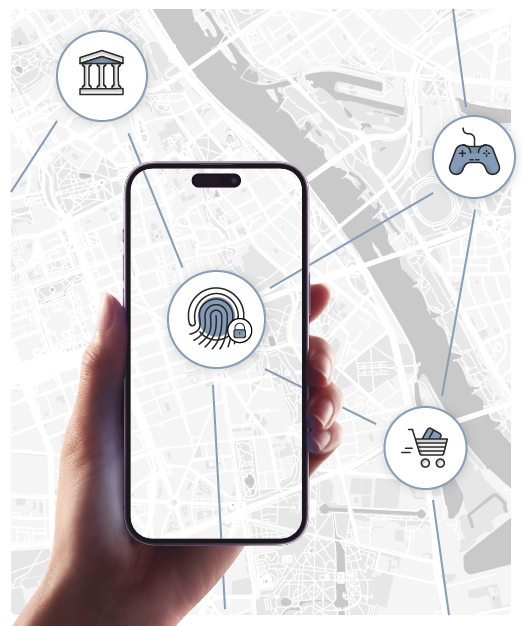Our Technology
We strive to be ahead of the curve.
People want more privacy and control over their data. The advertising industry needs to respect that. But this means personal data is reducing and can no longer be used as the exclusive currency for media trading and measurement. This is even more true for Digital-out-of-Home, Audio, and CTV. At Blis, we see a path forward that doesn’t just repackage the problems of the past.
The Blis Platform
The world's simplest, most visual, and most compelling planning, buying, and measurement platform.
Audience Explorer helps advertisers understand, find, and reach accurate audiences at scale with omnichannel advertising that delivers amazing performance.
Use it the way you want, either as a managed or a self-service platform.


We’ve built our platform from the ground up to be unique, offering:

Deep audience insights to understand and reach audiences on all devices and channels

Advanced targeting that delivers scale and performance, without relying on cookies or IDs

Patent-pending cookieless measurement that’s omnichannel & statistically robust

Premium direct inventory & supply across display, native, audio, online video, connected TV & DOOH

Powerful reporting to understand all aspects of delivery and performance

As well as all of the setup, targeting, and execution features available in traditional DSPs
Cookieless Targeting
Dynamic Audience Targeting is our unique technology that enables personalized advertising and performance without relying on personal data.


How does Dynamic Audience Targeting work?
Omnichannel Measurement
Smart Holdout Groups is our patent-pending, ID-free measurement technology.

How does Smart Holdout Groups work?
Geo Data
Audience intelligence structured on geography, not identity.
By structuring all our audience data around geo, we create a robust dataset that can be analyzed, combined, and activated across various channels. Blis leverages two decades of experience with location data to lead in this area. Our advanced tech stack, built on geo data, and partnerships with premium data providers ensure we deliver precise, actionable insights.
Blis’s first-party movement data offers real-world intelligence on where audiences go and what they do, providing a powerful foundation for building targetable audiences. Importantly, geo data does not rely on cookies or IDs. It uses geography, not identity, as the core element in advertising, making it a privacy-compliant and effective solution for today’s digital marketing landscape.

5 reasons geo is better than cookies and IDs.
1. Lower costs: Cookies and IDs are highly visible and heavily relied upon by many advertisers, making them more competitive and expensive. By using geo data, we can accurately find and reach your audience outside the crowded cookie and ID space. This leads to lower CPMs, higher ROI, and better overall campaign performance, as we’re bidding where other providers don’t realize your audience exists.
2. No audience loss when combining data sets: Geo data works seamlessly across channels, devices, and screens, eliminating the need to match IDs to create multi-faceted audiences. This ensures no audience loss and allows for the combination of different data sets to build more accurate, comprehensive audience profiles without reducing scale.
3. Reach people on apple: Most cookies (~90%) are found on Google platforms due to their continued approval of their usage. Relying on cookies limits your reach to these platforms. Geo data, on the other hand, allows us to find and reach your audience on any digital platform, including Apple. We use location, context, and time as identifiers, enabling us to find your audience wherever they are, not just where their cookies are.
4. Non-personal data: Using non-personal data in advertising is essential for respecting privacy. People and governments demand it, and it’s the right thing to do. Our geo-based technology delivers superior performance compared to cookies or IDs while respecting user privacy. It’s a win-win solution.
5. Amazing performance: Geo data consistently powers high-performing campaigns. Independent tests show our geo-driven campaigns can double performance and halve costs by finding and reaching audiences outside the crowded cookie and ID space. This results in lower competition, lower CPMs, and exceptional campaign outcomes.

Geospatial AI
Geospatial AI. Interpolate and connect audience intelligence to geographical areas.
Telco Data
The power of telco data.
1. Robust privacy protections: Telco data is inherently secure due to the stringent regulations governing telecommunications. Data is anonymized and aggregated, ensuring that individual user identities are protected. Blis adheres to the highest standards of data privacy and compliance, including GDPR and CCPA, to maintain consumer trust.
2. First-party data advantage: As a form of first-party data, telco data is collected directly from users through their interactions with mobile networks. This direct collection method reduces the risk of data inaccuracies and enhances the reliability of the insights derived. First-party data is also less vulnerable to the restrictions faced by third-party cookies and other traditional tracking methods.
3. Powerful behavioral insights: The power of telco data lies in its ability to provide deep behavioral insights. By analyzing patterns such as app usage, browsing behavior, and location history, we can develop a holistic view of the consumer journey. These insights enable more personalized and relevant ad experiences, increasing the likelihood of engagement and conversion.

How do we use telco data to improve campaign performance?

1. Enhanced audience targeting: We leverage telco data to create highly targeted audience segments based on precise criteria such as app usage, app installs and other phone-based behavior.

2. Optimized media buying: By understanding when and where users are most likely to engage with their devices, we can schedule ad placements to maximize visibility and impact. This leads to higher click-through rates (CTR) and return on ad spend (ROAS).

3. Cross-channel integration: Telco data is not limited to a single digital channel. This cross-channel capability ensures a cohesive and unified brand message, enhancing the overall effectiveness of the campaign.

4. Real-time campaign adjustment: The real-time nature of telco data allows us to monitor campaign performance continuously. We can quickly identify what’s working and what’s not, making adjustments as needed to improve outcomes.

5. Detailed performance analytics: Post-campaign, telco data provides detailed analytics that help measure the success of the campaign. These insights inform future campaigns, making each successive effort more effective than the last.

